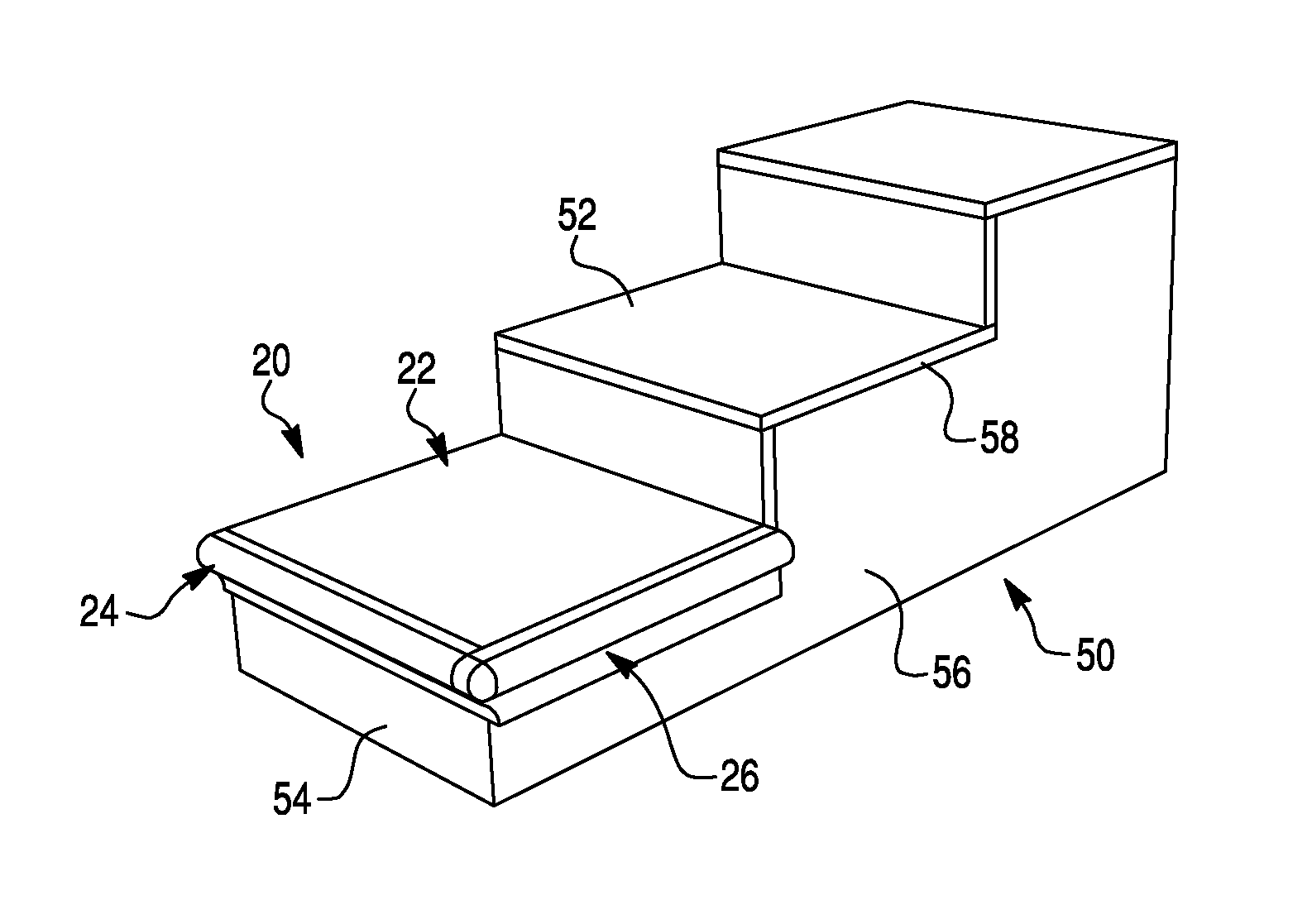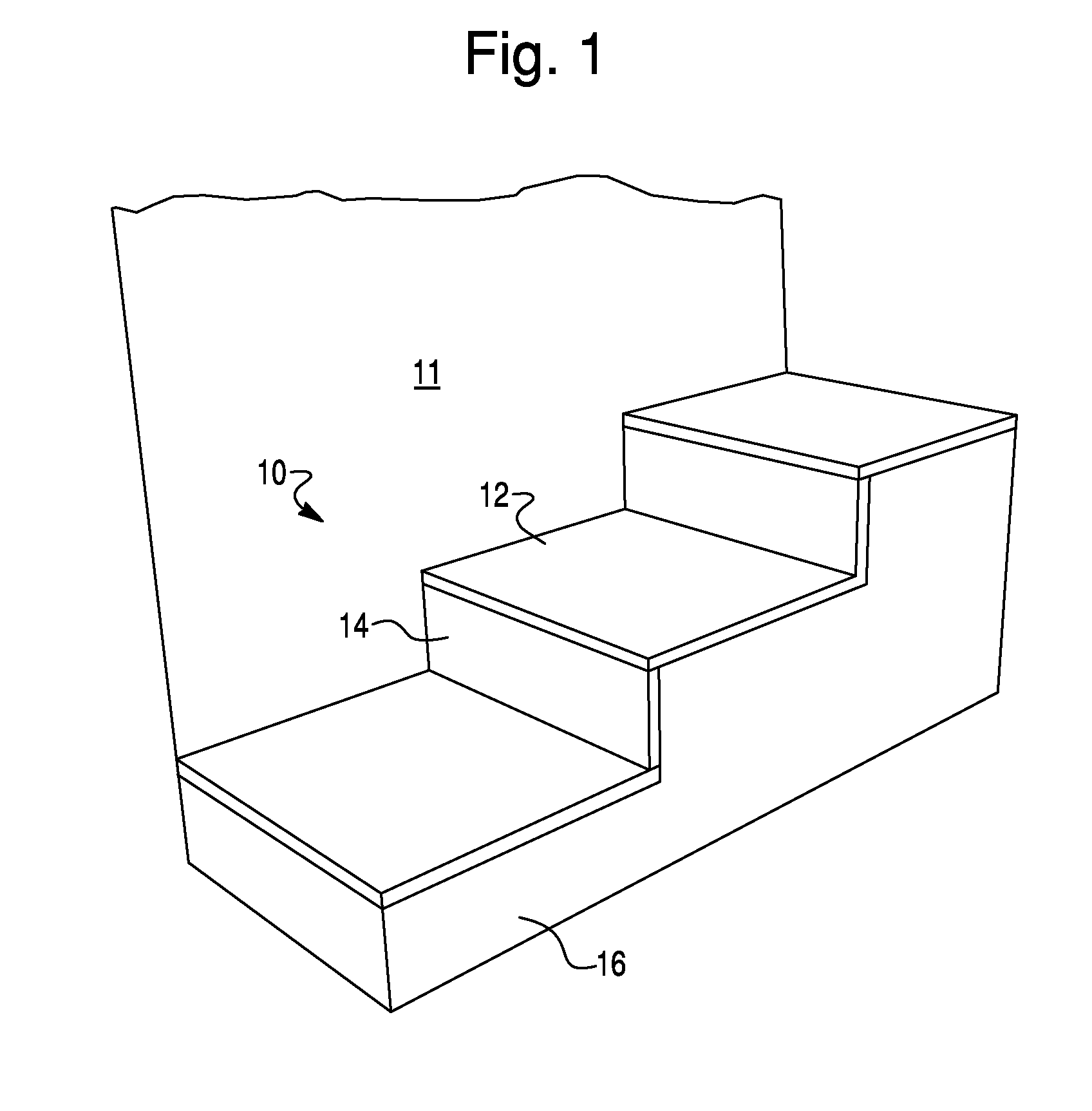Stair tread overlay and method
a technology for overlaying and stairs, applied in the field of stairs tread overlaying and methods, can solve problems such as prone to failure of construction, and achieve the effects of increasing surface area, strengthening joints, and extending the surface area of joints
- Summary
- Abstract
- Description
- Claims
- Application Information
AI Technical Summary
Benefits of technology
Problems solved by technology
Method used
Image
Examples
Embodiment Construction
)
[0026]The present invention is directed to an overlay for giving a finished or decorative appearance to a set of stairs, eliminating the need to tear out and replace existing unfinished stairs. FIG. 1 shows an unfinished set of stairs 10. The stairs 10 may be open along one end / side opposite wall 11 or the stairs 10 may be closed along both sides. The stairs have a series of treads 12 and risers 14, which are framed by a stringer 16. Unfinished stairs 10 are typically constructed out of a wood composite material such as plywood, fiber board, oriented strand board or the like. The stairs 10 typically are covered by carpet, although in certain cases, such as stairs to an unfinished basement, they may be left exposed.
[0027]An exemplary embodiment of a finished stair overlay 20 is shown in FIGS. 2-16. The overlay 20 comprises a stair tread 22, a front nosing 24, and a side nosing 26. The stair tread 22, front nosing 24 and side nosing 26 are all preferably made of solid wood and a pref...
PUM
| Property | Measurement | Unit |
|---|---|---|
| distance | aaaaa | aaaaa |
| distance | aaaaa | aaaaa |
| length | aaaaa | aaaaa |
Abstract
Description
Claims
Application Information
 Login to View More
Login to View More - R&D
- Intellectual Property
- Life Sciences
- Materials
- Tech Scout
- Unparalleled Data Quality
- Higher Quality Content
- 60% Fewer Hallucinations
Browse by: Latest US Patents, China's latest patents, Technical Efficacy Thesaurus, Application Domain, Technology Topic, Popular Technical Reports.
© 2025 PatSnap. All rights reserved.Legal|Privacy policy|Modern Slavery Act Transparency Statement|Sitemap|About US| Contact US: help@patsnap.com



